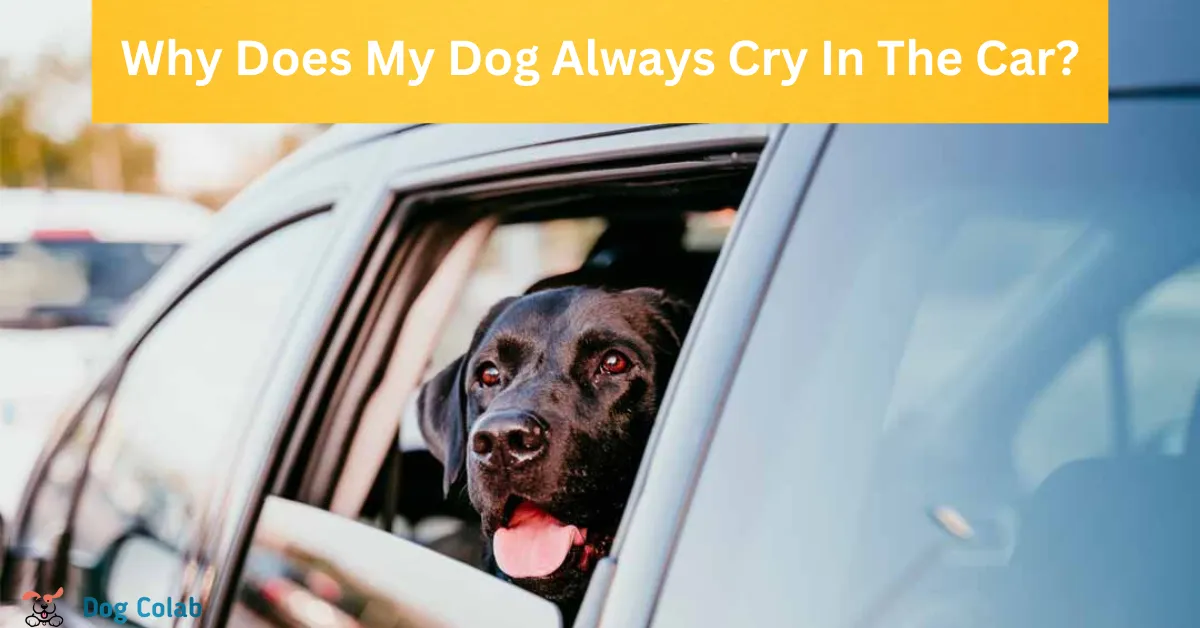Many dogs love car rides, but some don’t. If your dog is whining in the car, there could be several reasons for it.
So, why do dogs cry in the car? Your dog might be excited, nervous, or scared. They might also think they’re going to the vet, which they don’t like. Sometimes, dogs whine if they feel unwell or just want to be noisy.
If you want to understand why does my dog always cry in the car and want to stop your dog from crying in the car, keep reading.
(8 Reasons) Why Does My Dog Always Cry In The Car?
There are several reasons why do dogs cry in the car, and it’s essential to understand these factors to address the issue effectively. Here are the possible reasons.
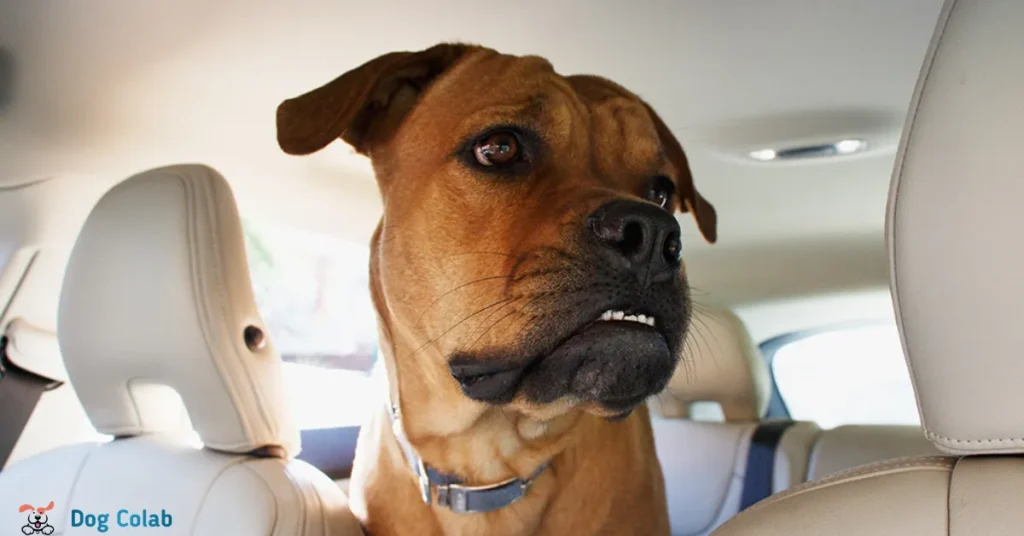
1. Motion Sickness
Motion sickness is a common cause of car anxiety in dogs. Just like humans, dogs can experience nausea and discomfort when the motion of a moving car doesn’t match their visual or vestibular senses. Young puppies and dogs who infrequently ride in cars may be particularly susceptible.
2. Fear or Anxiety
Fear and anxiety in the car can stem from various sources, including past traumatic experiences, unfamiliar environments, or a lack of positive associations with car rides. Dogs might cry and exhibit anxious behavior as a response to these emotions. Signs of fear or anxiety may include trembling, barking, and excessive panting.
3. Lack of Familiarity
Dogs thrive on routine and comfort. When placed in a moving vehicle, their familiar surroundings and sense of security are disrupted, leading to distress. Additionally, the sensation of the car’s movement can be unsettling for dogs.
4. Car Sickness Conditioning
If your dog has had a negative experience in the car, such as a traumatic accident or a painful veterinary visit, they may associate car rides with fear or discomfort. These negative memories can trigger anxiety and crying when they are in the car.
5. Temperature Discomfort
Extreme heat or cold can make your dog uncomfortable in the car. Ensure the car’s climate control is suitable for your dog and provides adequate ventilation or warmth, depending on the weather.
6. Restricted Movement
Dogs may become agitated when confined to a car seat or crate during a car ride. They prefer the freedom of movement and may cry because they feel restricted.
7. Sensory Overload
Dogs have sensitive senses, and the sights, sounds, and smells in a car can be overwhelming, especially in busy traffic or unfamiliar areas. The sensory overload can make your dog anxious or scared, leading to crying.
8. Social Isolation
Dogs are social animals, and they often feel more secure when they are with their human family members. Being alone in the backseat or in a crate can make them anxious and lead to vocalization as a way of seeking your attention and reassurance.
Dog Anxiety In Car Symptoms
Dogs can experience anxiety in the car for various reasons, and their symptoms can range from mild to severe. Some common symptoms of dog anxiety in the car include.
- Panting and drooling
- Restlessness
- Shaking or trembling
- Barking or howling
- Vomiting or nausea
- Attempted escape
- Hiding or cowering
- Excessive drooling or lip-licking
- Excessive yawning
- Aggressive behavior
Why Does My Dog Whine When The Car Stops?
Your dog might whine when the car stops because the dog are excited or anxious. When the car is moving, they may enjoy the motion and the new things they see outside.
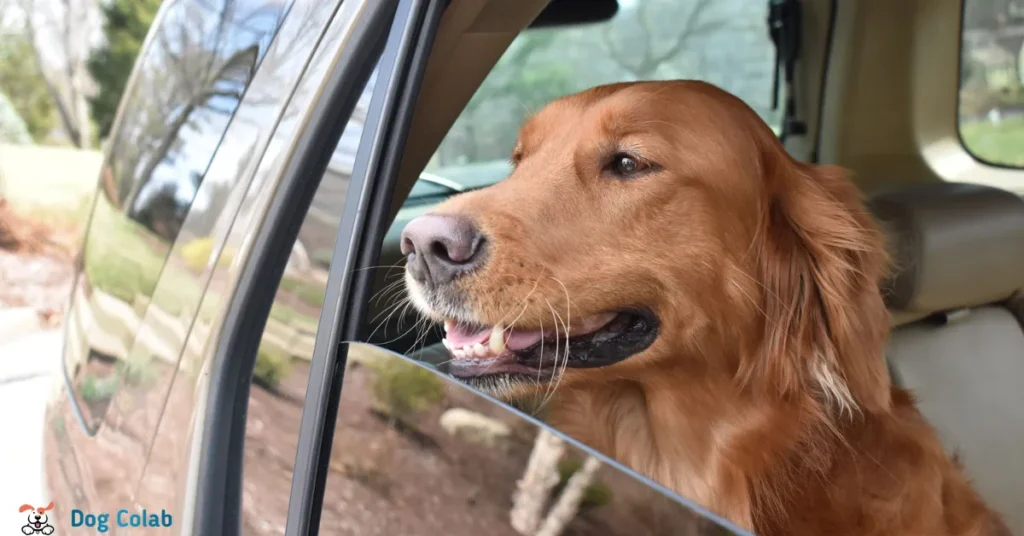
But when the car stops, they might get a little nervous or impatient, wondering why they’re not going on an adventure anymore. Some dogs might also feel car sickness, which can make them uncomfortable and whine.
Read More:- Why do dogs get excited when you come home.
Should You Worry About If Your Dog Crying In Car?
Yes, you should worry if your dog is crying in the car. It’s essential to address this issue because a distressed dog can be a safety hazard for both you and your pet.
A happy and relaxed dog during car rides is safer and makes the journey enjoyable for both of you.
Recommended Also Read:- Why do dogs bark in the car and how to stop it.
How To Stop My Dog From Crying In The Car?
Fortunately, there are several steps you can take to help your dog feel more at ease during car rides.
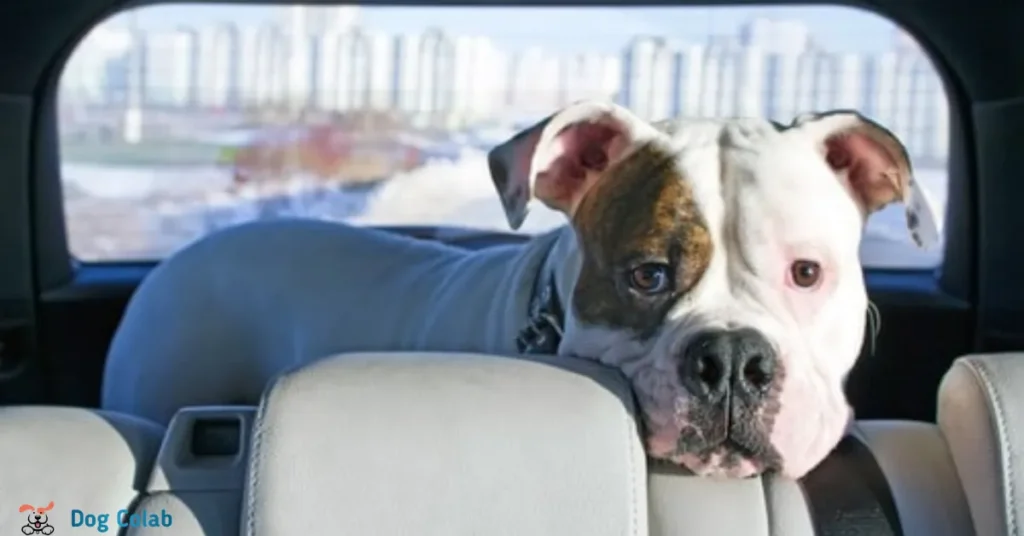
- Familiarization: Start by getting your dog used to the car without the engine running. Let them explore and play in the stationary car, so they associate it with a positive experience.
- Short Trips: Begin with short, non-stressful car rides. As your dog becomes more comfortable, gradually increase the duration.
- Positive Associations: Offer treats, toys, and praise when your dog enters the car. Make it a rewarding experience. You can also feed them meals in the car to create positive associations.
- Safety Restraints: Use a pet safety harness or a crate to keep your dog secure during the ride. This can reduce anxiety.
- Desensitization: Play recordings of car engine sounds to desensitize your dog to the noise before actual trips.
- Comfort and Familiarity: Bring your dog’s favorite blanket or toy in the car to make them feel more at ease.
- Calming Techniques: Consider using calming products, like sprays or calming vests, that can help reduce anxiety during car rides.
- Veterinary Consultation: If your dog’s anxiety persists, consult your vet for advice or medication options to help alleviate their stress.
- Gradual Exposure: Slowly increase the distance of your trips while monitoring your dog’s comfort. Make each ride a positive experience.
Tips For Traveling With Your Dog In The Car
Here are some tips to make the journey safe and enjoyable for both you and your furry friend.
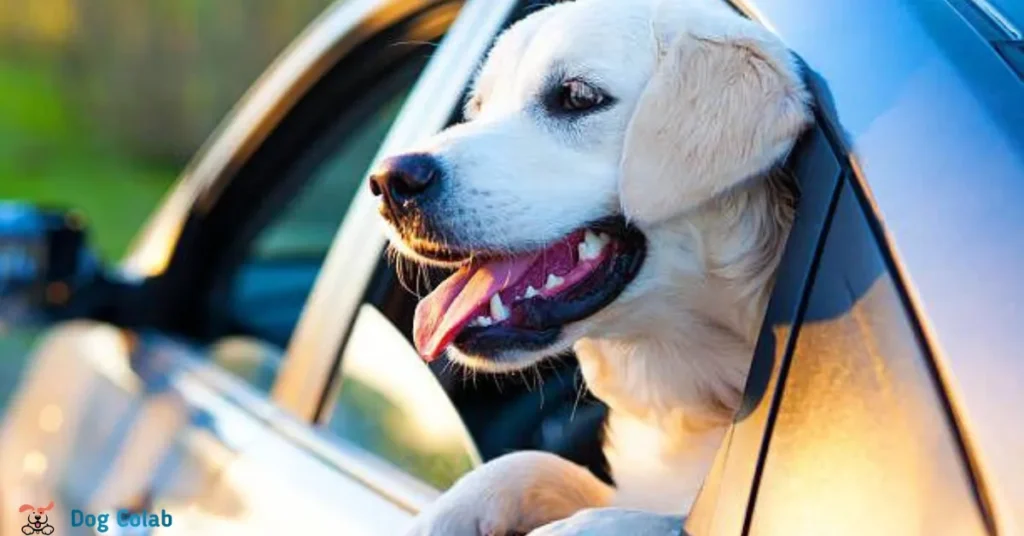
- Safety first: Use a pet restraint or crate to secure your dog during the ride. This keeps them safe and prevents distractions for the driver.
- Comfort in the car: Make the car a comfortable place for your dog by using their favorite blanket or bed.
- Frequent breaks: Stop every couple of hours to let your dog stretch their legs, have a bathroom break, and drink water.
- Never leave your dog alone: Don’t leave your dog unattended in the car, especially in hot or cold weather, as extreme temperatures can be dangerous.
- Proper ventilation: Ensure good airflow in the car, and avoid opening the windows too wide to prevent your dog from sticking their head out.
- Plan ahead: Research dog-friendly pit stops, parks, and rest areas along your route to make the journey more enjoyable.
- Avoid feeding before the trip: Feeding your dog a big meal right before the ride can lead to motion sickness. Feed them a few hours before you leave.
- Positive association: Reward your dog with treats and praise for good behavior during the trip to create a positive association with car rides.
- Bring essentials: Pack necessities like share food, water, a leash, waste bags, and your dog’s medical records, just in case.
- ID tags: Ensure your dog has proper identification tags in case they get lost during the journey.
- Stay calm: Dogs can pick up on your emotions, so try to stay calm and relaxed to help your dog feel more at ease.
Read More:- How to keep dogs cool while camping.
Conclusion “Why Does My Dog Always Cry In The Car”
Understanding the reasons behind why does my dog constantly cry in the car is essential for addressing their anxiety effectively. Dogs may experience fear, motion sickness, or anxiety while in a moving vehicle.
To help your furry friend feel more at ease, you can gradually introduce them to car rides, provide comfort and familiar items, and consult with a veterinarian for potential solutions like medication or training.
Hopefully, to answer your question “Why does my dog always cry in the car“, this is the end of this post. Please feel free to comment or ask more questions below.
The Dogcolab would like to thank you for visiting.
NOTE:- Recommended reading for further exploration of the topic.
FAQs
1. Why does my dog cry so much on car rides?
Your dog may cry on car rides due to motion sickness, anxiety, fear, or unfamiliarity with the experience.
2. Why won’t my dog calm down in the car?
Your dog may not calm down in the car due to anxiety, motion sickness, or lack of familiarity with car rides. Gradual desensitization and positive reinforcement can help ease their car-related stress.
3. How do I know if my dog hates car rides?
To determine if your dog hates car rides, observe their behavior. Signs of dislike may include excessive panting, drooling, shaking, whining, or attempting to escape the vehicle.
4. How can I calm my dog down in the car?
To calm your dog in the car, start with short, positive trips. Use a crate or secure seat belt, offer treats, and play soothing music. Gradually increase trip duration while ensuring your dog associates car rides with positive experiences.
